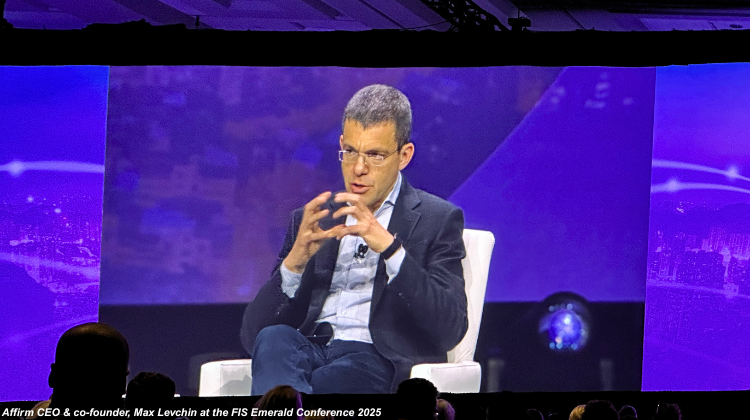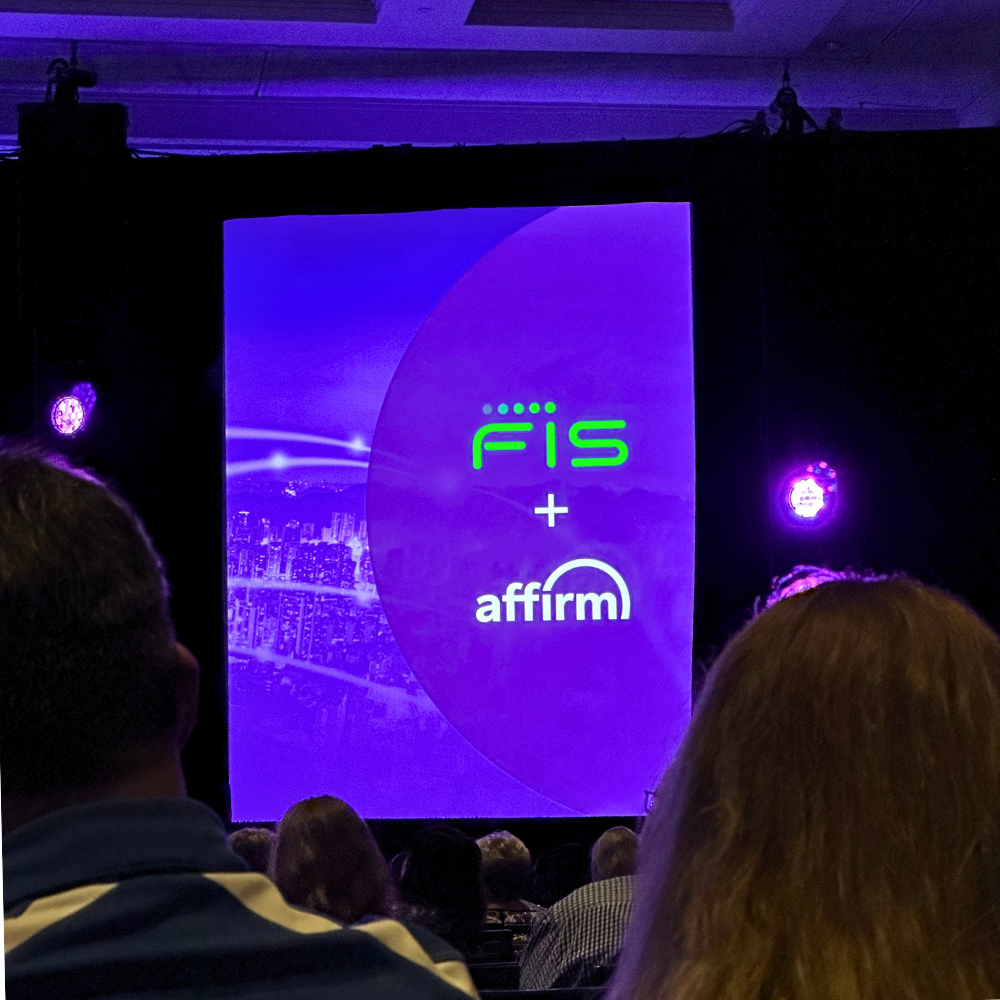‘Zero of my profits will come from late fees’: Affirm’s Max Levchin on building trust in lending
- In a recent fireside chat, Affirm's Max Levchin reflected on the early days of building Affirm, offering insights into the challenges of getting the company off the ground and shaping its installment products.
- Levchin also spoke about the decisions behind Affirm's product structure and the personal experience of navigating a space that was still largely undefined early on.

Thirteen years ago, when the term ‘buy now, pay later’ (BNPL) hadn’t yet become a fintech buzzword, Affirm entered the scene with a quiet but pointed difference. Founded by PayPal co-founder Max Levchin, Affirm approached consumer credit with a focus on transparency and structured payments, at a time when revolving debt and fine-print fees were the norm. Rather than chasing rapid scale through aggressive lending, the BNPL provider leaned into a more measured growth strategy, shaped by Levchin’s belief that payment clarity and consumer trust could offer a competitive edge.

In a recent fireside chat at the FIS Emerald Conference, Levchin reflected on the early days of building Affirm, offering insights into the challenges of getting the company off the ground and shaping its installment products. He spoke candidly about the decisions behind the product structure and the personal experience of navigating a space that was still largely undefined at the time.
The FIS Emerald Conference was held from May 19 to 22, 2025, at the Walt Disney World Swan and Dolphin Resort in Orlando, Florida. The 4-day conference centered around the concept of ‘Momentum,’ driving growth and transformation in the financial services industry. The conference explored the concept across three key areas:
- Money at Rest: Strategies for managing and optimizing idle capital.
- Money in Motion: Innovations in payments, liquidity management, and money movement.
- Money at Work: Leveraging financial technology for operational efficiency and growth.
After a series of opening talks by FIS leaders on Day 1, Levchin took the stage for a sit-down discussion, where he reflected on BNPL’s trajectory and shared grounded perspectives with his calm confidence, wry smile, and signature dry wit.
The beginnings of BNPL, as told by Max Levchin
Levchin opened by addressing that BNPL is no longer a passing trend; it’s here to stay, even if it’s still relatively new in the broader financial landscape. He described the origin of BNPL as the result of two seemingly conflicting forces.
On one hand, many Millennials, shaped by their experiences during the 2008 financial crisis, developed a strong aversion to traditional credit cards. “If you watched your parents go through the stress of a short sale or financial upheaval, you likely walked away thinking, ‘I never want a credit card,’” he explained. This generational attitude has been well-documented: Millennials tend to distrust revolving credit and the ambiguity of minimum payments.
At the same time, he noted, this generation also embraces consumerism, particularly through direct-to-consumer brands discovered on platforms like Instagram. “I don’t even use Instagram,” Levchin joked, “but I’m wearing a WHOOP I somehow found on there. And it’s not cheap.” So while Millennials may dislike credit cards, they still want to make purchases that often require financing.
This is where BNPL emerged as a compelling alternative. “We took the credit card model and broke it down into simple, transparent loans,” he said. Each purchase is treated as its own installment loan with no revolving debt, no surprises. The structure is straightforward: fixed payments, clear terms, and no confusing interest calculations.
Levchin reflected on the early days of Affirm, when the concept was met with skepticism. “Merchants would say, ‘Nice trick, but everyone needs a credit card.’” But time proved otherwise. “It turns out they were wrong — BNPL can drive up to 30% more in sales.”
Affirm, founded 13 years ago, has evolved into a major BNPL player. “We’ll process over $35 billion in BNPL volume this year alone, serving around 50 million Americans,” he shared. The company is now active in Canada and the UK, with a recent announcement of expansion into Europe.
“15 years ago, I may have been the only person running around thinking credit cards are going to have a comeuppance at this point,” he noted. “But today, it’s clear — it’s happening, and it’s happening fast.”
Continuing to uphold and grow the value promise
Reflecting on Affirm’s growth, Levchin explained that what sets the company apart is how its core offering, Buy Now, Pay Later, puts control in the hands of consumers.
“Our philosophy is simple,” he said. “Let’s take it all the way: no late fees, clear payment schedules, and no compounding interest,” Levchin explained that when Affirm shows a customer a number — say, borrowing $1,000 with $15 in interest, that number is locked in. “The most you’ll ever pay us, $1,015 — even if you’re late, even if you need to change your plans. That doesn’t change.”
He said that this level of transparency and control resonates deeply with customers, so much so that those are the two most commonly used words in customer feedback. “That has gotten us to the number one spot that we’re in.”
Affirm’s approach also benefits merchants, he added. “We’re building a two-sided network, and our brand promise to consumers carries over to the merchants they buy from.” That sense of being treated fairly, like not being penalized for a one-day delay, reflects positively on the retailer. “It becomes part of their brand halo.”
From a business perspective, the impact is tangible. “On average, merchants see a 5% to 25% boost in sales volume with Affirm. For higher-ticket items, the average order value can nearly double. These are customers who may not have purchased without flexible terms.”
“We seem to have struck a nerve with this,” added Levchin.
He also acknowledged the skepticism he’s faced over the years, especially around not charging late fees. “And by the way, if you’re thinking, ‘That guy’s crazy [because he] doesn’t charge late fees’ — I’ve heard it all before.”
“Fifteen years ago, I sat down with a very prominent banker from a money center bank who told me, ‘You’re nuts. Half my profit comes from late fees,’” he recalled. “I said, ‘Great. Zero of mine will come from there.’ And I think there’s a bunch of people who are going to really appreciate that.”
That mindset, he believes, is exactly why Affirm has connected so strongly with younger generations. “Millennials, Gen Z, and even the generation coming up after — they’re all extremely attuned to fairness. They don’t want to feel like they’re being punished when they’re down, especially for something they didn’t sign up for.”
“That,” he concluded, “is the heart of it. That’s what motivates me. That’s the value we’re really delivering.”
The time it will take to get everywhere
When asked why Affirm isn’t yet ubiquitous across every merchant website, Levchin noted that widespread availability is a work in progress. He explained that building a BNPL network means integrating with merchants individually, which takes time and scale.
“We’re building a network, which means, just like if you think back to the Fresno Drop and beyond, you’ve got to go integrate with every merchant, one by one by one by one,” he said.
Affirm has formed strong partnerships with major platforms like Stripe, Adyen, and Shopify, integrations that empower small merchants to get started with a simple setup. Still, for merchants that operate offline or outside of those ecosystems, a manual approach is often required.
“We are, at this point, just a flick of a switch away, but offline.”
Levchin drew a parallel to how credit card processors were sold in the 1980s, when independent sales organizations (ISOs) went door to door. Affirm is effectively doing the same thing, but digitally, by selling these integrations merchant by merchant.
At some point in Affirm’s journey, the team recognized a limitation: they were entirely online, with no physical card product to enable offline or broader usage. That realization prompted a big shift in strategy. Levchin recalled thinking: “If we had a piece of plastic with a scheme on it, like Visa or Mastercard (we picked Visa) — [it would] feel a lot easier.”
For almost half of its existence, Affirm operated without a card. Eventually, they decided to create one, a branded physical card that worked on the Visa network. But the path to launch wasn’t easy.
“It actually took multiple years to persuade all the imaginary parties that you can think of — regulators, banks, Visa — to put it all together. But it’s live.”
The card, which he described as a “Frankenstein happy monster” [something that was built from different parts, maybe unconventionally or messily, but that turned out well], is a debit card that allows users to plan loans directly within the Affirm app.
“You can go to any merchant, whether we’re integrated or not, you’ll get the same deals, you’ll get the same programs, you’ll get the same fee-free experience. And so we are now available everywhere. You just have to have the Affirm card.”
Why creating installment payment products isn’t straightforward
Addressing key challenges FIs face when trying to build and integrate pay-over-time solutions, Levchin acknowledged the complexity and effort involved. Drawing from his own experience, he noted that building payment networks never really gets easier, only more familiar.
“I’ve built a couple of payment networks in my life, and it doesn’t get any easier; you just get older. But it’s a lot of work, and I love it, so I keep coming back to it.”
i) Merchant integration: One of the fundamental challenges in creating installment products is merchant integration. Getting individual merchants onboard isn’t something that easily scales. Affirm is now at a stage where it has done much of that heavy lifting, though.
As a quick aside, Levchin pointed out why these direct merchant connections matter. While it might seem appealing to run Affirm entirely on top of Visa, like traditional payment networks, that would mean giving up one of the company’s strongest differentiators: exclusive merchant offers.
“Visa is connected everywhere, so maybe we could just run this whole thing on top of Visa. You can, but then you’re missing out on the special offers in the network,” he mentioned.
A large part of Affirm’s competitive edge is its direct partnerships that fuel promotional financing.
“What makes Affirm compelling is that when you pull out your Affirm app or use the Affirm card, a large percentage of the time, the merchant you’re transacting with has a special contract with us,” he noted.
These special offers are featured directly within the app and are available on Affirm-branded cards for users.
ii) Credit and underwriting challenges: Another key challenge companies may face in launching pay-over-time solutions is the credit and underwriting challenges. When building a credit network, industry skepticism is nearly guaranteed.
“Everybody tells you good luck. And by the way, if you want to lend some money, you’re gonna have to do it on your own balance sheet, because no one trusts your risk scores. No one’s gonna believe that you know how to service,” noted Levchin.
He recalled early conversations with bankers, where Affirm was told to prove itself by lending real money from its own pocket before anyone would take its credit models and risk management seriously. Affirm took that challenge seriously. The company has been lending from its own balance sheet for over a decade now.
“We’ve been lending money out of our own pocket for 12 years now. We’ve had fantastically consistent credit outcomes, and just printed another quarter, another great set of credit outcomes.”
This track record, he said, is central to what Affirm now offers its partners. Beyond just enabling pay-over-time functionality, Affirm assumes the underwriting and funding risk. “Part of what we bring to the table in a partnership is that we won’t just enable this functionality onto your debit card. We will also take all the underwriting and funding risk.”
The next phase of pay-over-time solutions
Levchin sees a clear direction for the future: the simplicity and transparency of flexible payment plans will likely become a standard consumer expectation.
“I do think this idea of flexible plans that are really simple, really easy for a consumer to control, to get, have a sense of transparency about, is coming,” he said.
He also clarified that this doesn’t mean traditional lines of credit no longer have a place; there’s still plenty of value in those, but the preferences of younger consumers are shifting decisively toward streamlined, easy-to-understand installment options. “The young consumer really loves the simple payment plan.”
Levchin also anticipates that flexible financing features could soon be embedded into physical cards and digital wallets. “It will be a required function on every piece of plastic and every digital wallet, by the way, to support every digital wallet under the sun, in case you’re wondering. And so, this will be integrated everywhere.”
In February this year, Affirm partnered with FIS to enable FIS’s banking clients to integrate Affirm’s pay-over-time solution into their existing debit card programs via digital banking and mobile apps, making it easier for customers to manage their finances from a single interface.
For large institutions like major banks and credit card issuers, Levchin believes the path to implementing such features is relatively straightforward, as they have the resources and infrastructure to build it themselves. But for regional and community banks, flexible payment features represent more than convenience; they could become a valuable tool to deepen customer relationships.
Levchin spoke about the importance of preserving the local banking relationship, describing it as the heart of trust in finance. He views solutions such as those from Affirm as a way for small banks to extend beyond traditional roles like savings accounts or debit card issuance.
“The humble debit card now has a superpower. You can just open your app. Turn on a transaction, swipe the card or tap it, and it just happens,” he noted.
This kind of experience, he said, keeps customers engaged within their bank’s own digital ecosystem, creating stickier, more meaningful relationships. “I think there’s a profoundly important vector for the entire industry.”
Levchin concluded his thoughts with the hope that innovations like these can help support small community banks in a rapidly evolving financial landscape.
“I’m sort of a sucker for small local banks. Every time I hear one [small community banks] closing, I cry a little, and I think this is something that we’re doing, to hopefully support that part of the industry.”
Quotes were taken from a live session and have been edited for clarity.


